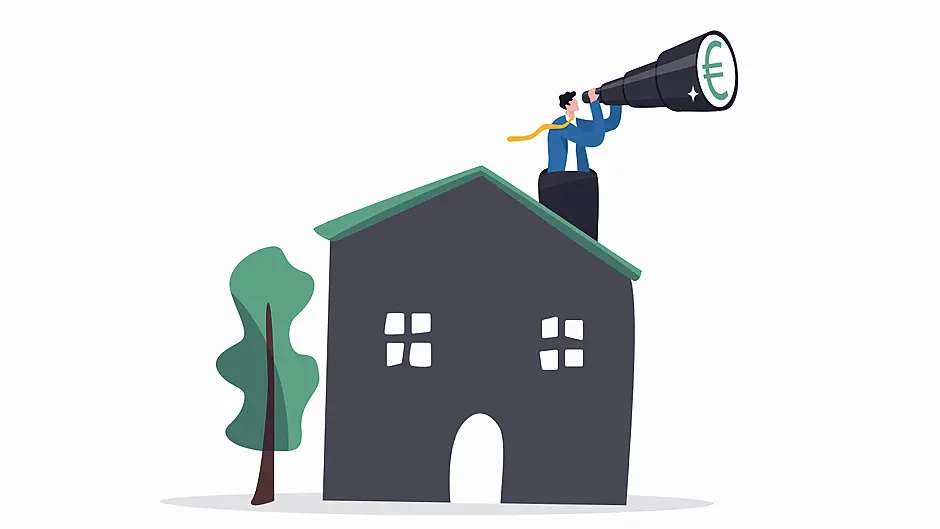Lifestyle, location and high demand versus poor supply are all factors driving prices on the local property market, with little sign of a let-up over the coming years, writes Conor Power
HOUSE prices in West Cork are currently rising moderately – anywhere between 5% and 10%. It’s a trend, however, that’s hard to pin down in a market which is so starved of supply and which has so many unique elements to it, many of which are based on lifestyle choices and location rather than the more robust elements of supply and demand.
One of the most significant trends worldwide over the last decade or more is the advent of the digital nomad.
When I was an auctioneer in the late 1990s and early 2000s, I once sold a house on the Sheep’s Head Peninsula to a British client who was commuting to work every week in London from the North of England. As I stood scratching my head and shaking his hand, he explained to me how the commute involving a two-hour drive to Cork Airport followed by an hour’s flight to London was actually shorter than the five hour drive he was used to making every week from his home in the north of England.
If it made sense in 1998 to move from northern England to one of West Cork’s most remote peninsulas, it makes perfect sense today to move to anywhere in West Cork from anywhere else in the world.
Today’s digital nomad might only need to show their face at work every month or so. While the post-Covid world is seeing more and more people return to the workplace, there remains a very large cohort of workers who can operate remotely and these, coupled with those running their own myriad businesses from home, make up a very strong buying public that is increasing in influence.
Information today moves at a faster pace than ever. When I was selling property, it was already fast enough, with more and more people browsing houses on the internet. Now, that process is even swifter, with market reactions to sought-after properties being almost instantaneous.
‘The indicators for the residential property market in West Cork are very encouraging,’ says Denis Harrington of Bantry-based Harrington Estates.
‘The biggest and the broadest market that we have is that of people who are relocating here. These are people who are coming here for early retirement, for remote working ... that market isn’t showing any sign of slowing down. If anything, that segment is picking up even more momentum.’
‘Interest in the West Cork market is strong all the time,’ agrees John Hodnett of Clonakilty-based auctioneers Hodnett Forde Property Services. ‘What we see in the West Cork region is a mixture of buyers: you have people relocating; you still have the foreign market including those hitting retirement age; and then you have the people living and working in the locality. They’re the three main segments of the market ... Location is almost always a big factor.’
‘The market is solid at the moment,’ says Skibbereen-based auctioneer Pat Maguire, ‘and we’re seeing good-quality buyers still in the market. There’s a strong demand for the finished walk-in product. Buyers are predominately local, and then there are many buyers coming from Dublin and abroad. For us, the UK buyers aren’t as strong as they were four or five years ago but they’re still prominent... we also have a number of ex-pats who are coming back home from abroad for a better quality of life.’
For the overseas buyers, many of them are still finding that prices here offer good value. That might not seem obvious to young couples living here and hoping to get on the property ladder, but that’s where the market stands in West Cork right now and its international aspect is only likely to increase in the future; making the importance of government intervention to assure local residents of a roof over their heads even more vital.
‘The driver of the market at the moment is the poor supply,’ says Pat Maguire. ‘I don’t see that changing too soon ... I think that over the coming years, the government is going to have to get involved in building houses again.’
The government’s efforts to subsidise the refurbishment of properties is having a very limited impact on the marketplace. While there are examples of people availing of the generous grants available, the conditions required and the paperwork involved can be off-putting. Furthermore, the grants are only of benefit to those who are already funding a project.
‘We are seeing some degree of benefit whereby we’ve seen demand rise for properties which are suitable for that grant scheme,’ notes Denis Harrington. ‘That’s partly as a result of the scheme, no doubt. And hopefully, that will accelerate urban regeneration in places like Bantry and Castletownbere. But it’s early days yet.’
‘We were expecting more out of that initiative,’ says Pat Maguire. ‘When you dig down, you find that the terms and conditions attached don’t make it as attractive. I think that the biggest problem is that the people they’re trying to target may not have the money up-front to do this. You’re paid after the work and that’s helping the person who’s well-funded rather than the person who’s not. I think that’s the weakness in that initiative.’
‘You have to fit into a certain set of criteria to get this,’ says John Hodnett, ‘and there are so many hoops to be jumped and gone through before you have final confirmation ... often by
the time people have gone through all this, the house that they were interested in has been sold.’
In the meantime, the West Cork property market rolls on.
Demand is still too strong for the recent interest rate hikes to have any significant impact on it, with auctioneers reporting a certain degree of caution amongst first-time buyers but not a lessening in demand.
In any case, much of the market is cushioned by West Cork’s timeless desirability.
The future for West Cork residential property for the next decade looks positive. And if the efforts to improve housing supply bear fruit, then it will be a far more positive future for all.










